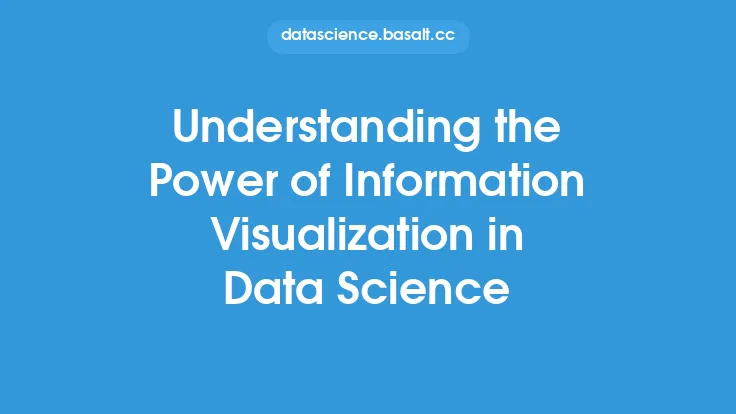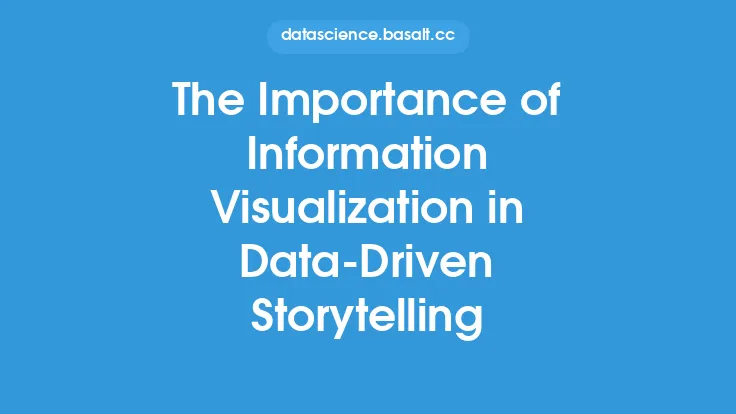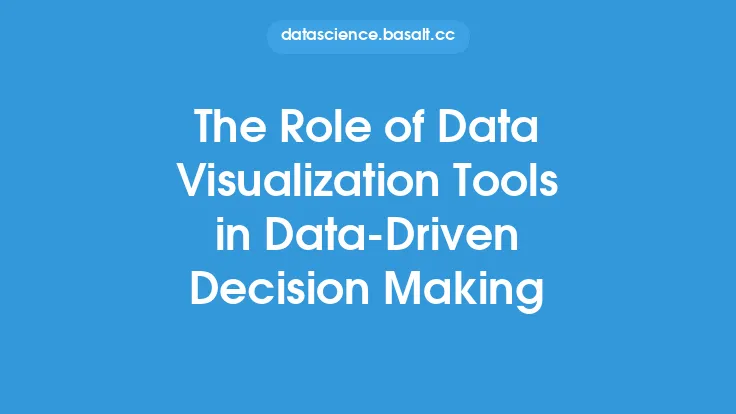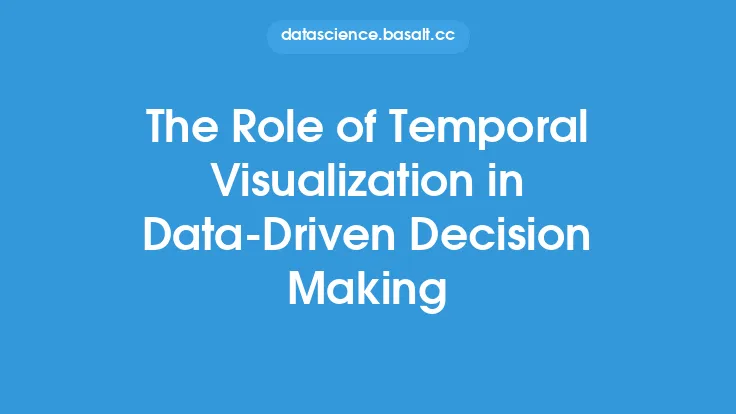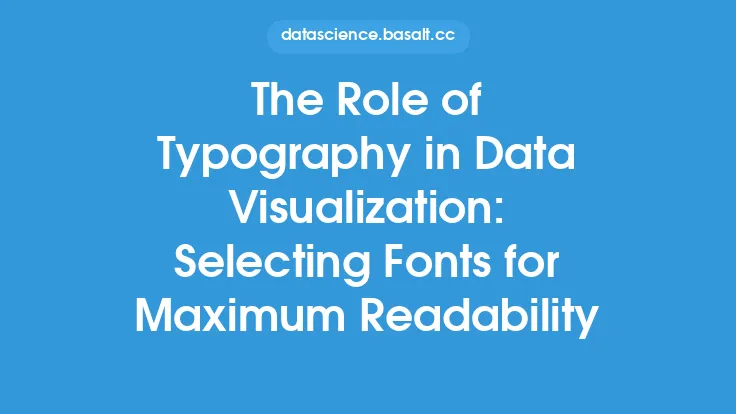Information visualization is a crucial aspect of data visualization that involves the use of visual representations to communicate information and data insights effectively. It plays a vital role in enhancing data understanding by presenting complex data in a clear and concise manner, making it easier for users to comprehend and analyze. The primary goal of information visualization is to facilitate the exploration, analysis, and presentation of data in a way that supports decision-making, knowledge discovery, and communication.
Introduction to Information Visualization Concepts
Information visualization concepts are built around the idea of using visual elements such as charts, graphs, maps, and other graphical representations to display data. These visualizations can be static or interactive, depending on the level of complexity and the intended use. Static visualizations are typically used for presentation and communication purposes, while interactive visualizations are used for exploration and analysis. The choice of visualization technique depends on the type of data, the level of detail required, and the intended audience. Some common information visualization concepts include data mapping, network analysis, and hierarchical visualization.
The Science Behind Information Visualization
The science behind information visualization is rooted in cognitive psychology, computer science, and graphic design. It involves understanding how humans perceive and process visual information, as well as the technical aspects of creating interactive and dynamic visualizations. Cognitive psychology plays a crucial role in information visualization, as it helps designers understand how users process and retain visual information. Computer science is also essential, as it provides the technical foundation for creating interactive and dynamic visualizations. Graphic design principles are used to create visually appealing and effective visualizations that communicate information clearly.
Best Practices for Effective Information Visualization
Effective information visualization requires careful consideration of several factors, including data quality, visualization technique, and user interaction. Best practices for information visualization include using clear and concise labels, avoiding clutter and unnecessary visual elements, and providing interactive features that allow users to explore and analyze the data. It is also essential to consider the level of detail required, as well as the intended audience and purpose of the visualization. Additionally, information visualization should be designed to facilitate storytelling and communication, rather than simply presenting data in a visually appealing way.
Technical Aspects of Information Visualization
The technical aspects of information visualization involve the use of various tools and technologies to create interactive and dynamic visualizations. Some common tools used in information visualization include data visualization software such as Tableau, Power BI, and D3.js. These tools provide a range of features and functionalities that enable designers to create custom visualizations tailored to specific needs and requirements. Additionally, programming languages such as Python, R, and JavaScript are used to create custom visualizations and interact with data. The choice of tool or technology depends on the level of complexity, the type of data, and the intended use of the visualization.
Applications of Information Visualization
Information visualization has a wide range of applications across various industries and domains. It is used in business intelligence to support decision-making and strategic planning, in healthcare to analyze patient outcomes and treatment effectiveness, and in finance to analyze market trends and portfolio performance. Information visualization is also used in education to create interactive and engaging learning materials, in research to communicate complex findings and results, and in government to inform policy decisions and public awareness campaigns. The applications of information visualization are diverse and continue to expand as the field evolves and new technologies emerge.
Future Directions in Information Visualization
The future of information visualization is exciting and rapidly evolving, with new technologies and techniques emerging continuously. Some future directions in information visualization include the use of artificial intelligence and machine learning to create personalized and adaptive visualizations, the integration of virtual and augmented reality to create immersive and interactive experiences, and the development of new visualization techniques and tools tailored to specific domains and applications. Additionally, there is a growing need for information visualization to be more accessible and inclusive, with a focus on creating visualizations that are usable by diverse audiences and stakeholders. As the field continues to evolve, it is essential to stay informed about the latest developments and advancements in information visualization.
